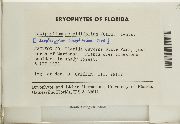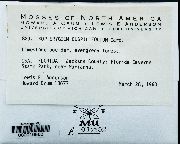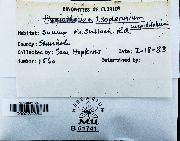
Consortium of Bryophyte Herbaria
- building a Consortium of Bryophytes and Lichens as keystones of cryptobiotic communities -
|
|
|
|
Family: Hypnaceae
toothleaf taxiphyllum moss
[Isopterygium cuspidifolium Card., more] |
|
Powered by Symbiota.









































































